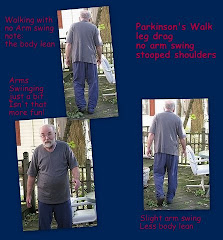National Stem Cell Bank NIH Contract Not Renewed - WiCell Plans to Move Forward
How Will This Effect Parkinson's Disease Research?
How Will This Effect Parkinson's Disease Research?
The hope for the use of stem cells to treat and possibly cure many incurable diseases or life-altering conditions is shared by many patients and families around the world. Research with human embryonic stem cells (hESC) is still relatively new, having been started at the University of Wisconsin-Madison in 1998 in the lab of James Thomson. Despite the apparent opening of the field upon the Obama orders to the lift the Bush ban against federal research funds being used for hESC, the new NIH guidelines were not met with overwhelming enthusiasm. Still restrictive, these guidelines did, however, open the door for researchers. Now, a few months later, it would appear that door is subtly and quietly being closed again.
The National Institutes Of Health (NIH) did not renew the National Stem Cells Bank's $16.1 million four year contract with WiCell Research, a private non-profit at the University of Wisconsin-Madison. The contract, which expired on February 28th, 2010, had subsidized the distribution of Federal approved embryonic stem cells. Since the contract was not renewed, the lack of action and adequate funding caused the bank to regroup. The closing has led to a doubling of the price for approved stem cells. Costs have risen from $500 a vial to $1000 as there is no longer a subsidy for obtaining those 20 lines.
Both the general public and medical scientists had thought that stem cell research would be moving much faster after President Obama took office and doubled the number human embryonic stem cell (hESC) lines available. Instead, just getting the lines distributed to the researchers has become an unexpected hurdle. The former National Stem Cell Bank has now become the Wisconsin International Stem Cell Bank (WISC Bank) but the prices have been doubled in order to meet previously subsidized expenses. It is not clear how this will effect future research. WiCell has, however, expanded its lines from 20 to 33 and is planning to move forward.
Is there an underlying reason to attempt to bar one door in favor of another to open wider for another area of research? We don't have that answer; the transition seemed low-key. But there in recent years there has been an expanding a trend toward not the scientific significance but rather the economic impact of research. Science, politics and finance do not make a great martini; but they do make the research drink in which currently we find ourselves.
In January NIH expanded its contract with a different cell bank. Coriell Institute for Medical Research is a non-profit institution which established the Human Genetic Cell Repository in 1972. Coriell is known to have the largest bank of human cell lines and has long been associated with the NIH. In 2010 the National Institute of Health provided $27 million to Coriell for banking induced pluripotent stem cells(IPS), for which there is no destruction of embryos, to create a stem cell lab and a human genetic biobank. Nothing is planned at this point for specifically underwriting embryonic stem cell banking.
The hope is that the NIH will continue to consider setting up its own public stem cell bank if they are not going to renew with WiCell. This action would reduce the price and speed the delivery of all lines but especially the new lines approved by the Obama administration.
Currently there are 109 hESC lines awaiting NIH approval for NIH funded research, 237 lines for which there is an intent to submit. 51 hESC lines (3 on hold) are available in the NIH Registry. The approved lines are eligible for NIH funding grants but these lines are available only through individual institutions. A total of 54 institutions have submitted lines or intend to do so. The future costs per vial for researchers is unknown although currently Children's Hospital Boston, affiliated with Harvard Medical School which is still shipping lines at a loss.
While there are many big pharma potentials, it is the preliminary and intermediate work in understanding the medical conditions, recognizing the best targets, developing safe and effective processes and procedures that must take place before there is more than profit potential. And after that the intellectual property rights will have to be determined and the debates will rage.
Waiting for effective treatments are people with Parkinson's and Alzheimer's disease, diabetes, heart disease, spinal cord injury and many more. For these people with incurable conditions has a hope been dashed or simply redirected to another area of scientific research? Time, once more, may not be on our side.
References:
Another Look at Stem Cell Research by Dr Alan Malnak
About the Coriell Institute for Medical Research
Promises, Promises by Stuart Blackman, The Scientist
You can read more about stem cell basics at the National Institutes of Health website. You can also read the 2006 NIH Stem Cell Report of progress made since 2001.













